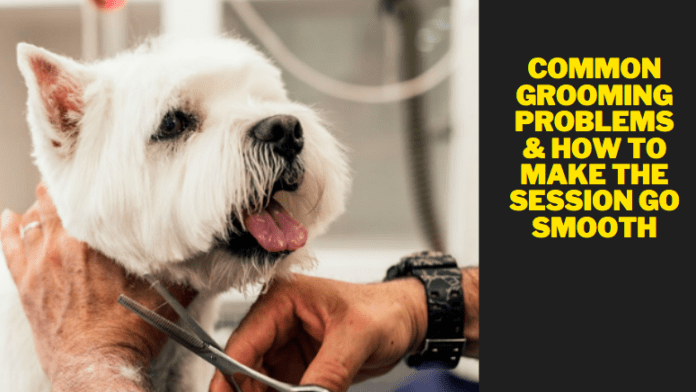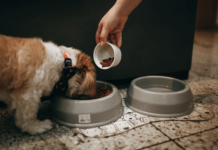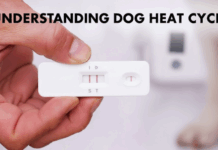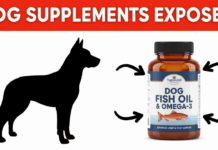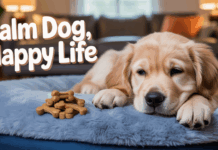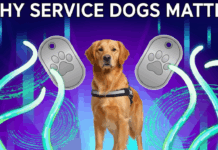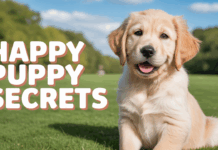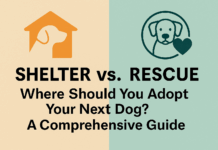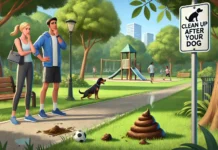Last Updated on February 18, 2022 by Dogs Vets
Common Grooming Problems & How To Make The Session Go Smooth
When it comes to developing a healthy bond with our puppies, we need to make sure that the early stages of their lives go as smoothly as possible.
Unfortunately, some things are usually overlooked, and today I’ll take a closer look at one in particular – grooming sessions.
Some of the most common grooming problems happen before the session even starts – the moment you bring your pooch to the groomer.
So, today, we’ll go over what those mistakes are – and how you can prevent them from occurring in the future!
Don’t Be Too Hasty
Regardless of which dog breed you own or how well trained your pup might be, we recommend not to visit the groomer until your pooch turns 12 weeks of age.
Why?
Young pooches need tons of care and attention from the owner – especially during the initial few weeks after they’ve been separated from their mothers. So, to avoid traumatizing your puppy, be sure to wait until they’re old enough before they encounter a groomer.
Arriving At The Groomer For The First Time
Just like us, puppies might be anxious whenever they meet or encounter something for the first time. So, to prevent any unnecessary drama, consider staying close to your beloved pup during that first grooming session.
Most young dogs quickly get excited once you stimulate their playful side. But, in the hands of a new, unknown person, some dogs might manifest not-so-great behaviors, with restlessness and aggression being the prime examples of that.
To prevent that from occurring during your pup’s first grooming session, stay close to them – no matter how long the process might take.
Introduce Them To The Grooming Tools Properly

Let’s get one thing straight:
Grooming tools are not toys for dogs! It’s specifically designed equipment necessary to maintain a clean and well-taken-care-of look of your dog.
As such, allowing your pooch to chew on them, toss them around, or even try to swallow them will lead to unnecessary risks.
Before you allow the professional groomer to start working their magic on your pup, we’d highly recommend that you introduce the tools to your pooch – especially if they came to the grooming salon for the first time.
Some dogs are suspicious little creatures and won’t take being touched by an unknown person very lightly – especially when approached with unfamiliar tools. So, for the first encounter, make sure that you’re the one that introduces them to the grooming tools.
Speak With The Groomer Beforehand

Certain pieces of information regarding your dog will be of high value to the new groomer. They need to work on a puppy they’ve never met before, after all.
So, before you schedule a grooming session for your dog, you’ll need to discuss the following:
How old is your dog? What type of dog is it? Have they ever been to the groomer before? Does your pup exhibit any aggressive behaviors – and if so, how can they be managed or prevented?
While you’re at it, remember to point out any specific details about your puppies, as it might be beneficial towards creating a calm atmosphere during the grooming session.
Most importantly, if your dog has any allergies (or other health issues), be sure to mention those to the groomer before starting the session. That way, they’ll be more prepared to notice common allergy symptoms in dogs.
Don’t worry; professional groomers are well aware that they’re working with animals that require lots of free space and comfort to remain well-behaved and cheerful.
Your Dog’s Fur

Regardless of the breed, all dogs will fall into one of two categories – single-coat or double-coat.
Fortunately, this shouldn’t worry you when venturing to the grooming studio, as professional groomers know how to recognize both.
On the off chance that you’re considering grooming your dog on your own, then you’ll need to be extra careful about their fur. While this might surprise you, many pet parents aren’t aware that there’s even a difference between single and double-coated dogs.
If you’re not sure about your dog’s fur type, you can always contact your local vet; they’ll provide some info about your dog’s coat. That’s primarily beneficial if you don’t own a pure-blooded dog.
Why does it matter?
When you know what type of fur you’re dealing with, it minimizes the risk of potentially injuring your puppy during the brushing stage of grooming and ensures that you use the correct type of brush for the job. Of course, you should stroke your pup with the brush as gently as possible either way.
And don’t forget:
Bathe your dog before you start grooming; it’s a good way to kick the session off and make sure that your pup’s all nice and clean.
Common Grooming Problems – Conclusion
Most grooming mistakes happen due to ignorance and lack of communication between the pet owner and the groomer. So, to prevent them from occurring, let’s reexamine the most common grooming problems – and how to avoid them:
- Your dog should be at least 12 weeks old before going to the groomer’s office.
- Once there, we highly recommend that you introduce the grooming tools to your dog on your own before the session begins.
- Stay close to your dog during the first appointment; it will help them remain calm.
- If your dog has any allergies, make sure that you mention them to the groomer!
- If you’re interested in grooming your dog on your own, learn about the different types of dog coats – and act accordingly.
Following this guide will ensure that your dog doesn’t experience any unnecessary stress during their grooming sessions, keeping your bond strong and healthy for years to come!
Author Bio
As a staunch animal shelter volunteer and assistant pet store manager, Michael dedicated his last ten years to helping animals in need. The knowledge and experience accumulated in his favorite place – Jack’s Pets – now allows him to help pet parents around the globe.
Facts Check:
We hope you enjoyed this article… What are your thoughts on Common Grooming Problems & How To Make The Session Go Smooth?
Рleаse let us knоw yоur thоughts in the соmments seсtiоn. Feel free to share with us in the comments section below.
